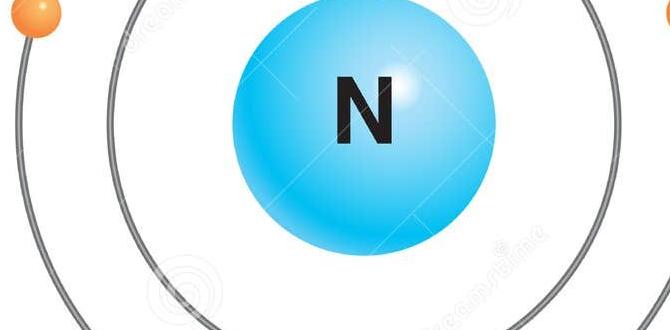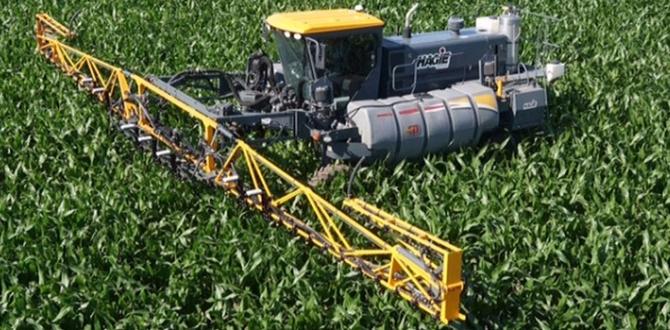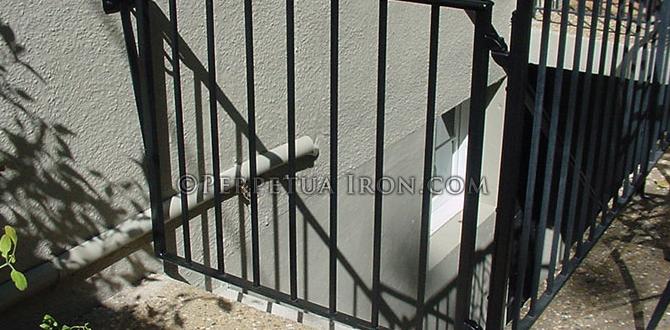Have you ever wondered why some gardens bloom so beautifully? A key secret lies in nitrogen. This important nutrient helps plants grow tall and strong. Without enough nitrogen, your garden might not reach its full potential.
Imagine walking through a vibrant garden filled with colorful flowers and fresh vegetables. Wouldn’t it be amazing to create your own little slice of paradise? With the right amount of nitrogen, you can! This element is like food for plants. It helps them make the green leaves we all admire.
Did you know that nitrogen makes up 78% of the air we breathe? Plants can’t use it directly from the air, though. They need a little help to get this essential nutrient. By learning about nitrogen for gardens, you can unlock the secret to a thriving outdoor space.
Nitrogen For Gardens: Essential Nutrient For Healthy Growth

Nitrogen for Gardens
Nitrogen is crucial for healthy gardens. It helps plants grow strong and green. Did you know that without nitrogen, plants can become yellow and weak? Adding nitrogen-rich compost or fertilizer can boost your garden’s health. It’s especially important for leafy vegetables like lettuce and spinach. Remember, too much nitrogen can harm plants, so balance is key. Give your garden the right amount of nitrogen for vibrant, thriving plants!Understanding Nitrogen’s Role in Plant Health
Importance of nitrogen in photosynthesis and protein synthesis. Signs of nitrogen deficiency in plants.
Nitrogen is a key player in plant health. It helps plants grow strong and green. This nutrient is vital for photosynthesis, where plants make food from sunlight. Nitrogen also aids in protein synthesis, crucial for growth. Without enough nitrogen, plants show signs of weakness. They may have yellow leaves or stunted growth. Keeping an eye on these signs helps gardeners maintain healthy plants.
What are the signs of nitrogen deficiency in plants?
Common signs include:
- Yellowing leaves, especially older ones.
- Slower growth rates.
- Poor fruit and flower production.
- Leaf drop or wilting.
Sources of Nitrogen for Garden Use
Natural sources: compost, manure, and cover crops. Chemical fertilizers: types and application methods.There are several ways to bring nitrogen to your garden. First, natural sources like compost, manure, and cover crops can do wonders. Compost adds nutrients while helping keep the soil happy. Manure from farm animals is like a tasty treat for plants, as long as it’s well-aged. Cover crops grow during the off-season and return nitrogen to the soil.
If you prefer quick fixes, chemical fertilizers are an option. They come in different types like liquid or granules. You can sprinkle them or mix them in water. But be careful! Too much can make your garden go “whoosh” instead of “wow.”
| Source | Benefits |
|---|---|
| Compost | Improves soil health |
| Manure | Rich in nutrients |
| Cover Crops | Prevents soil erosion |
| Chemical Fertilizers | Fast nutrient supply |
So, mix it up! Your garden will be the talk of the town. Who knew nitrogen could bring such joy to plants and gardeners alike?
How to Test Nitrogen Levels in Your Soil
Best soil testing kits and labs. Interpreting soil test results for nitrogen levels.
To find out how much nitrogen is in your soil, a soil test is your best friend. You can use simple soil testing kits available at garden stores. These kits often come with clear instructions, making testing easy, like baking a pie—but way less messy! If you prefer professional help, labs can offer detailed results. Here’s a handy table to guide you:
| Soil Testing Kit/Lab | Key Feature |
|---|---|
| GardenTech Soil Test Kit | Quick and easy with a color chart! |
| LaMotte Soil Testing Lab | Detailed results with expert advice. |
After testing, it’s time to decode the results. A low nitrogen reading means your plants might be feeling sluggish, like they skipped their morning coffee! Aim for a level around 10-20 ppm for happy plants. Remember, interpreting results is key to a thriving garden!
Optimal Nitrogen Levels for Different Plants
Recommended nitrogen levels for vegetables, flowers, and shrubs. Adjusting nitrogen based on plant growth stages.
Nitrogen is key for healthy plants. Different plants need different nitrogen amounts. Here are some general recommendations:
- Vegetables: 50-100 lbs per acre is ideal. Leafy greens like spinach need more.
- Flowers: 30-60 lbs per acre work well. Bright blooms thrive with moderate nitrogen.
- Shrubs: 20-40 lbs per acre can help them grow strong and steady.
As plants grow, adjust nitrogen levels:
- Young plants need more to establish roots.
- Mature plants require less.
Finding the right balance can be fun and rewarding!
What is the best nitrogen level for each plant type?
The best nitrogen level varies by plant type. For vegetables, 50-100 lbs per acre works well. Flowers enjoy 30-60 lbs per acre. Shrubs thrive with 20-40 lbs per acre.
Timing and Methods of Nitrogen Application
Best times of year to apply nitrogen. Techniques for effective nitrogen application: granules vs. liquid.
Applying nitrogen at the right time is key for happy gardens. The best time to sprinkle this magic nutrient is in spring and early summer. Why? Plants love to grow then! You can use two main methods: granules or liquid. Granules are like slow-release treats for your plants. They work over time. On the other hand, liquid nitrogen acts quickly, giving your plants a fast energy boost. Both methods have their charm; choose what fits your garden’s mood!
| Method | Benefits |
|---|---|
| Granules | Slow and steady release |
| Liquid | Fast results, instant energy |
Impact of Excess Nitrogen on Garden Health
Symptoms and consequences of nitrogen overdose. Environmental concerns associated with nitrogen runoff.
Too much nitrogen can harm your garden. Plants may grow too quickly, leading to soft leaves and weak stems. This can make them more likely to suffer from pests and diseases. Excess nitrogen also wastes water and fuels algae blooms in nearby lakes. These blooms can choke fish and other wildlife. Here are some signs of nitrogen overdose:
- Yellowing leaves
- Soft, leggy plants
- Poor fruit production
- Increased pests
What happens to the environment due to nitrogen runoff?
Nitrogen runoff can pollute local waterways. It creates problems for drinking water and aquatic life. Too much nitrogen can upset the balance of nature, leading to harmful effects for animals and plants that live in those waters.
Alternatives to Nitrogen for Sustainable Gardening
Exploring nitrogenfixing plants and their benefits. Importance of biodiversity for nutrient balance in the garden.Growing nitrogen-fixing plants can be a great choice for your garden. These plants, like beans and clover, take nitrogen from the air and put it into the soil. This helps other plants grow strong. Biodiversity in your garden is important too. It helps keep nutrients balanced. A mix of plants can protect against pests and diseases. Plus, it makes the garden beautiful!
What are some nitrogen-fixing plants?
Some good nitrogen-fixing plants include:
- Beans
- Clover
- Peas
- Alfalfa
Including these plants can make your garden healthy and thriving! Biodiversity brings many benefits, creating a lively environment in your garden.
Frequently Asked Questions about Nitrogen in Gardening
Common misconceptions about nitrogen use. Practical tips for novice gardeners on managing nitrogen levels.Many folks think adding nitrogen means using giant bags of fertilizer on their gardens. Wrong! Too much nitrogen can be like giving plants a crazy energy drink—they grow too fast but might fall over. To keep your garden healthy, it’s important to balance nitrogen levels. Want a simple tip? Use compost. It adds nitrogen slowly and gently, helping plants grow strong without the jitters!
| Myth | Truth |
|---|---|
| Nitrogen is always bad for plants. | Too little nitrogen harms growth; balance is key! |
| Liquid fertilizers are better than granules. | Both work; use what you can manage! |
So, when in doubt, remember: less can sometimes be more in the gardening game!
Conclusion
In conclusion, nitrogen is vital for garden growth. It helps plants grow strong and lush. You can add nitrogen through compost or fertilizers. Check your soil to see if it needs more nitrogen. Remember, healthy plants make beautiful gardens. For more tips on using nitrogen, consider reading gardening books or visiting local gardening websites. Happy gardening!FAQs
Sure! Here Are Five Related Questions About Nitrogen For Gardens:Nitrogen helps plants grow big and strong. You can add nitrogen by using special fertilizers or by planting cover crops like clover. It’s important not to add too much nitrogen, or plants might grow too fast and become weak. Testing your soil can also tell you how much nitrogen it has. Remember, happy plants need the right amount of everything!
Sure! Just let me know what question you want me to answer.
Why Is Nitrogen An Essential Nutrient For Plant Growth And Development In Gardens?Nitrogen is super important for plants because it helps them grow strong and healthy. It’s like food for plants, helping them make their leaves green and big. When you add nitrogen to your garden, plants can make more fruits and flowers. This means you’ll get a lot more yummy veggies and beautiful blooms!
What Are Some Natural Sources Of Nitrogen That Can Be Added To Garden Soil?You can add natural sources of nitrogen to your garden soil in a few ways. One great option is using compost made from food scraps and yard waste. Green plants, like grass clippings or clover, also add nitrogen. You can even use manure from animals like cows or chickens. These help your plants grow strong and healthy!
How Can Nitrogen Deficiency Be Identified In Garden Plants, And What Symptoms Should Gardeners Look For?You can spot nitrogen deficiency in garden plants by looking for yellow leaves. These leaves often turn yellow starting from the bottom. The plant may also grow slowly and look weak. If you see these signs, it means your plants need more nitrogen!
What Is The Role Of Nitrogen-Fixing Plants In Garden Ecosystems, And How Can They Benefit Soil Health?Nitrogen-fixing plants help garden ecosystems by taking nitrogen from the air and changing it into a form that plants can use. This process makes the soil healthier and richer. When we grow these plants, they improve the food for other plants nearby. They can also help us grow more fruits and vegetables!
How Does The Timing And Method Of Nitrogen Application Affect The Growth And Productivity Of Garden Crops?When we add nitrogen to garden crops at the right time, they grow better and healthier. If you spread nitrogen on the soil before planting, it helps seeds grow strong. Using nitrogen as the plants grow can make them produce more food, like fruits and vegetables. We should follow the best ways to apply it, like mixing it with water or spreading it evenly on the ground. This helps our plants get the food they need to thrive!






